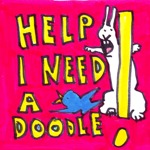Art Butcher of International Business Academies Limited (a.k.a. IBAL) asked me to write a post to share on the IBAL’s new website. While that project is coming together I thought I would share the post here as well:
Everyone has heard of the 3 R’s of education: “Reading, wRiting, and aRithmetic”, but have you heard of the 3 R’s of branding? They are Recognition, Reputation and Reaction.
Recognition: We want our products to be recognized. We want the hard work that goes into packaging our products and services, the money we spend on advertising, and all the planning we do in marketing, to benefit our brand, not the competition’s. This is why logos are important. This is why we craft tag lines and slogans. This is why Coke is so fussy about the exact shade and hue of red in their packaging. This is why McDonald’s is so aggressive about controlling the use of “Mc____” wherever it can.
Reputation: In the end your branding is a suggestion that your company makes about its relevance and meaning, and it is your customers, prospects and partners who get to decide what your brand truly means to them. You can be well recognized, but if your reputation is bad the recognition can hurt you. On the other hand, if your product is undistinguished from your competition, a well-recognized brand alone may not be helping you as much as you think. How often have you sneezed, asked for a Kleenex, and been handed a Puff? Did you notice the difference? Did you care? Recognition is naturally associated with reputation, but the reputation is strongest when it encompasses a unique value or serves the needs of a particular niche.
Reaction: This is where the money is made, or lost. You want your brand to provoke a positive reaction, to get people to choose your product over the competition’s. You want a reaction so positive and strong that it can beat a sale price on a similar item or have a customer choose your service over another solution. But a negative reaction can be brutal. Whether you are being ignored on the shelf, or actively boycotted, a negative reaction cycle can be ruinous to your business.
So how do you tune your branding to get the reaction you want? Well the magic won’t happen if the recognition and reputation aren’t right. You have to take Recognition beyond merely locating yourself in an industry or slapping a logo on your business card. You have to approach Reputation in a mindful way – don’t just let it happen, participate! Align your values with the expectation you set for your brand. Know the boundaries of your message and the expectations you are setting with your brand promises. Be prepared to walk your talk and fix it when you stumble. You are in the business of developing and maintaining trust.
Here a few more R’s for you: Repetition, Reinforcement and Rigor: Consistent and attentive behavior, clearly communicated value, and a track record of disciplined delivery will support the 3 R’s of Branding and will get you seeing the Reactions the matter!












K.I.S.S. – Keys to Brand Management
Sometimes you can get carried away when you write a blog or sit down with a client. You don’t mean to, but you end up waxing on and on about the nuance of this point or the other. That is why it is nice to occasionally run across a simple little list that offers a lot of compact value. The Blake Project offers a great 7 bullet list on Key Brand Management Considerations. Each one is pearl.